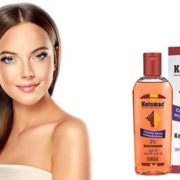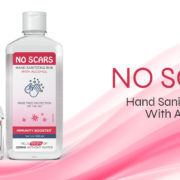The critical ingredient for surviving in the food and beverage business is a seriously tasty product. Once you’ve developed your mouth-watering and eye-popping item of pure gastronomical delight, you’ll need to think about spreading the word. After all, you can’t keep that monumental tastiness all to yourself! That wouldn’t be fair.
By creating a buzz surrounding your product, you’ll generate a conversation among potential customers, and widen your audience. It’s also important to remember that ‘the first bite is with the eye’, or so they say, so an immaculately presented product, with strong branding and a great publicity campaign, is essential to success. You’ll also need to ascertain your target market and work out how to develop that product in order to entice them.
Here are seven tried-and-tested marketing strategies that could boost your food and beverage business:
1. Trade show exposure
Nowadays, experiential marketing reigns supreme. People are far more likely to remember a face-to-face, positive and emotive experience with your brand, than a faceless campaign. It’s science! When you have a joy-inducing encounter, your brain releases a bunch of hormones – dopamine included. This natural painkiller and calm-inducing chemical make you feel warm and fuzzy inside, and because of this, the next time you recognize the brand that made you smile, your brain will release a heap more of those very same hormones, to take you right back to that original, pleasant feeling.
Trade fairs are a great place to make this magic happen. Showcase your best items. Hand out free samples. Brand the heck out of your stall (in a tasteful manner!). Employ only your happiest, most genuine and personable humans to front the stand. Then get some quality branded freebies made up. Custom beer mats are a great idea – they won’t break your budget and with a great designer on board, you can get something classy and stand-out made up to ensure your brand sticks in people’s minds long after the trade fair has ended.
2. Understand the potential of your unique selling point
What is your unique selling point? What makes you special? And what makes you stand out from the rest? This USP can be anything from the way you vend your products – like for example, in a food truck covered in street art that runs on leftover vegetable oil – to the fact that yours is just the best-damned sandwich in your local area, hands down, no competition. Or perhaps your products are made using only local produce, and your carbon footprint is zero. Whatever it is, you need to recognize it and use it as leverage to push your wonder-product.
3. Blogging
Your search engine optimization (SEO) strategy begins with an online blog, and the best place to start is through your website. From this platform, you can integrate with your social media platforms, like Facebook, Twitter, and Instagram – multiplying your posts and creating a broader impact.
When blogging, be careful only to upload quality content. Make sure your articles are engaging and useful to your customers. Ensure you use keywords and a catchy, concise title. Use quality images, original photography, and videography. Just make sure it’s visually pleasing and share-worthy. All of these points will work in your favor and help you build a more vibrant and dominant online presence.
4. Email Marketing
Send a monthly email to your contact list. Make sure the emails are of some value and relevant to your audience. People hate junky, pointless marketing messages clogging up their inboxes. Emails are swift and easy to send – all you need are email listings of potential as well as current customers.
To garner such a list, you must have something tantalizing on offer, a catchy hook worthy of an email address. THE EXCHANGE MUST BE FAIR. If you’re a restaurant, monthly recipes from the head chef are a great idea. Also, why not make your loyal address book privy to exclusive deals, product offers, and upcoming events. Maybe offer select ticket prices to one-off events etc. Whatever you do, make sure the recipients feel special and part of your exclusive brand family.
5. Marketing via social media platforms
Instagram is one of the most significant platforms a food and beverage business can utilize to shine through social media. People love photos of food; food porn is a legitimate thing. Not only can you post fabulous images of your products and events, but you can actively encourage your customers to snap their own experiences with your brand by using a related hashtag.
Using this communication channel properly can have massive results for your brand. A considerable following can amass in a relatively short time if you engage with your customers regularly. Competitions and conversations are a great way to connect with your audience. Partnering with influencers, and food bloggers is also a great way to reach broader viewers – invite them to review you or offer them samples to try.
6. Utilizing your venue
Take full advantage of what you have at your disposal. Jump on food festivals, seasonal celebrations and special occasions, like Easter, or Valentine’s day. Offer special menus or festive packages, but remember not to complicate things too much – you don’t want to over-stretch yourself, and risk falling short of your grand promises and expectations. Use these events to showcase what you do best. Advertise through social media, email campaigns, and good old fashioned posters and flyers. Events like this, when done right, also help boost your brand awareness and amplify the effect of customers spreading the word through positive word of mouth.
7. Re-vamping your image
Every big brand, whether celebrity or merchandise, at some point, goes through a transformation to re-emerge looking more radical than ever before. It’s all in the packaging! As a long-standing brand, staying relevant to your current consumers and refreshing your image from time to time is imperative to market survival.
Possibly THE most classic example of a food and beverage industry re-vamp is the Christmas story of Coca-Cola. In an incredibly bold maneuver, the corporate giants changed the color of Santa Claus’s famous outfit. Nobody had considered this before, let alone actually do it. However, lucky for Coca Cola, fortune favors the bold, and the campaign proved so successful, that from then on in they changed the course of history, and Santa Claus (traditionally clad in pagan green) remained in red forevermore.
Summary
From custom beer mats to brew festivals, from trade stands to food trucks, whatever it takes, you’ve got to get your brand out on the front line and dazzle your audience’s five senses!
Take the time to interact with your online audience, listen to what they’re saying and react accordingly. Keep your web content fresh and relevant and endeavor to raise the Google rankings, sky-rocketing your product into a million homes.













